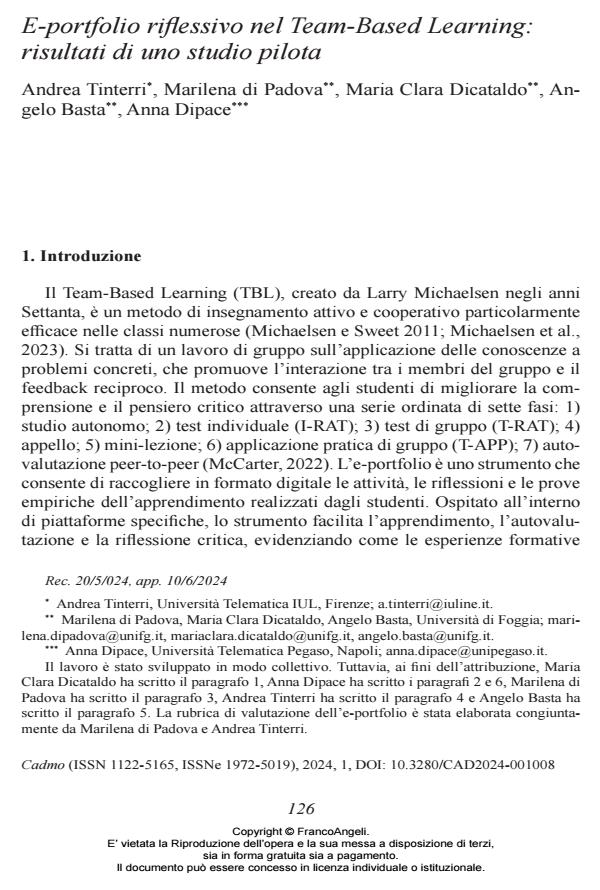E-portfolio riflessivo nel Team-Based Learning: risultati di uno studio pilota
Titolo Rivista CADMO
Autori/Curatori Andrea Tinterri, Marilena di Padova, Maria Clara Dicataldo, Angelo Basta, Anna Dipace
Anno di pubblicazione 2024 Fascicolo 2024/1
Lingua Italiano Numero pagine 13 P. 126-138 Dimensione file 199 KB
DOI 10.3280/CAD2024-001008
Il DOI è il codice a barre della proprietà intellettuale: per saperne di più
clicca qui
Qui sotto puoi vedere in anteprima la prima pagina di questo articolo.
Se questo articolo ti interessa, lo puoi acquistare (e scaricare in formato pdf) seguendo le facili indicazioni per acquistare il download credit. Acquista Download Credits per scaricare questo Articolo in formato PDF

FrancoAngeli è membro della Publishers International Linking Association, Inc (PILA)associazione indipendente e non profit per facilitare (attraverso i servizi tecnologici implementati da CrossRef.org) l’accesso degli studiosi ai contenuti digitali nelle pubblicazioni professionali e scientifiche
Team-Based Learning (TBL) is an active, learner-centred methodology whose popularity is growing in higher education. It is structured around a combination of autonomous study, individual and group assessment, and teamwork. Splitting students in teams promotes responsibility, interaction, and mutual feedback; however, assessing individual contribution to team success can be problematic. In academic year 2023/2024, an experimental course of TBL took place at the University of Foggia; here, TBL has been combined with the use of e-portfolio as part of summative assessment, with the aim of promoting and documenting student reflection both towards the activities and the learning process. This contribution investigates both student perceptions and learning achievements, discussing the potential of e-portfolio as a part of the TBL methodology.
Parole chiave:e-portfolio, TBL, assessment, active learning, higher education.
Andrea Tinterri, Marilena di Padova, Maria Clara Dicataldo, Angelo Basta, Anna Dipace, E-portfolio riflessivo nel Team-Based Learning: risultati di uno studio pilota in "CADMO" 1/2024, pp 126-138, DOI: 10.3280/CAD2024-001008